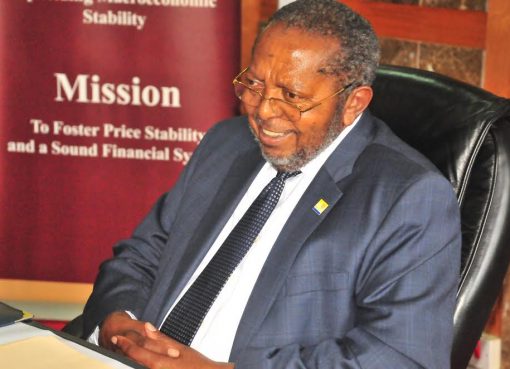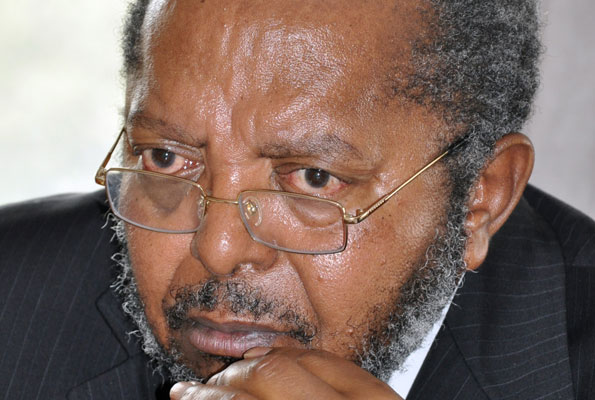A photomontage of bank Chief Executive Officers and Managing Directors
Commercial banks are struggling to recover money lent out to customers.
According to the recently released audited financial statements of banks for the year ended 31st December 2022 analyzed by Business Focus, total industry Non-Performing Loans (NPLs) increased to Shs1.19 trillion in 2022, up from ShsShs1.07 trillion in 2021. The total industry loans advanced to customers stood at Shs19 trillion in 2022. This gives an industry NPL ratio of 6.26%.
There are 25 commercial banks in Uganda. This website has exclusively compiled and analyzed the financial results so as to help customers, partners and stakeholders of these financial institutions to know how their banks performed as well as help them make informed decisions.
This analysis is also important for students with a bias in banking finance as well as policy makers.
In this article, the focus is on NPLs, one of the key performance indicators for banks.
A Non-Performing Loan (NPL) is a loan in which the borrower is in default and hasn’t made any scheduled payments of principal or interest for a certain period of time.
In banking, commercial loans are considered nonperforming if the borrower is 90 days past due.
NPLs are subject to late repayment or are unlikely to be repaid by the borrower.
Importantly, NPLs can tie up a bank’s capital, reduce its profitability, and damage its reputation.
The Bank of Uganda (BoU), the regulator of the banking sector, considers NPLs to be high if the NPL ratio is above 5%.
NPL ratio is the ratio of the amount of NPLs in a bank’s loan portfolio to the total amount of outstanding loans the bank holds.
ALSO READ:
Exclusive: Largest & Smallest Banks By Assets Named As Total Industry Assets Hit Shs45.4Tn In 2022
Tropical Bank has the highest NPLs in Uganda as of 31st December 2022. Headed by Abdulaziz Mohamed Mansur as Managing Director, Tropical Bank’s NPL ratio stands at 22.37%. This is however lower than the 31.3% recorded in 2021. The bank’s NPLs reduced to Shs26.6bn in 2022, down from Shs37.51bn in 2021. This is against Shs118.87bn in loans advanced to customers in 2022.
Equity Bank sits second in the table of banks with highest NPLs. Headed by Anthony Kituuka as Managing Director, Equity Bank’s NPL ratio is 17.03%. This is after the bank’s NPLs increased to Shs277.75bn in 2022, up from Shs78.78bn in 2021.
The bank advanced loans to customers worth Shs1.63 trillion in 2022.
As a result of high NPLs, Equity Bank’s profit reduced by 46.8% to Shs45.75bn in 2022, down from Shs86bn in 2021.
In third position of banks with highest NPLs is Cairo Bank Uganda. Its NPL ratio is 16.79%. This is after the bank advanced loans to customers totaling to Shs125.4bn in 2022 and NPLs increased to Shs21.06bn in 2022, up from Shs8.73bn a year earlier.
It is followed by NCBA Bank that is headed by Mark Muyobo as Managing Director. With the NPL ratio of 15.26%, NCBA sits 4th on the table of banks with highest NPLs. The bank’s NPLs increased to Shs32.14bn in 2022, up from Shs21.44bn in 2021. NCBA bank advanced loans to customers totaling to Shs210.61bn in 2022.
In 5th position is Exim Bank with NPL ratio of 13.02%.
Headed by Henry Kyanjo Lugemwa as CEO, Exim Bank’s NPLs increased to Shs25.95bn in 2022, up from Shs12.54bn in 2021. The bank lent out Shs190.4bn in 2022.
I&M Bank that is headed by Sam Ntulume as Ag. Managing Director and CEO, is the 6th bank with highest NPLs. Its NPL ratio stands at 13.02%. This is after its NPLs increased to Shs30.49bn in 2022, up from Shs3.52bn in 2021. This is against Shs234.07bn in loans lent out to customers in 2022.
It is followed by Absa Bank Uganda with NPL ratio of 12.43%. Headed by Mumba Kalifungwa as Managing Director, Absa’s NPLs reduced slightly to Shs194.84bn in 2022, down from Shs198.06bn in 2021. Loans to customers stood at Shs 1.56 trillion in 2022.
In 8th position is Bank of Africa with NPL ratio of 10.9%. Its NPLs increased to Shs51.1bn in 2022, up from Shs5.28bn in 2021. This was against Shs468.17bn in loans extended to customers in 2022.
Opportunity Bank also has one of the highest NPLs in the market. With NPL ratio of 10.16%, Opportunity Bank is the 9th bank with highest NPLs. This is after its NPLs increased to Shs13.14bn in 2022, up from Shs10.8bn in 2021. This was against Shs129.21bn in loans advanced to customers.
Guaranty Trust Bank completes the top 10 banks with highest NPLs.
Headed by Oluwole Shodiyan as Managing Director, Guaranty Trust Bank’s NPL ratio is 9.54%. This is after its NPLs increased to Shs6.92bn in 2022, up from Shs2.79bn in 2021. This is against Shs72.5bn in loans advanced to customers in 2022.
Importantly, out of the top 10 banks with highest NPLs, the first nine banks have NPL ratio above 10%.
Others
Other banks with NPL ratio above 5% include ABC Capital Bank (8.74%), dfcu Bank (7.91%), Bank of India (6.15%), Finance Trust Bank (5.81%) and PostBank (5.65%).
For more details on banks with highest and lowest NPLs, check the table below;
Banks-with-Most-NPLs-1Banks With lowest NPLs
Banks with lowest NPLs include UBA (0.84%), Standard Chartered Bank (1.21%), Bank of Baroda (1.37%), Ecobank (2.18%), Stanbic Bank (3.19%), Centenary Bank (3.56%), KCB Bank (3.59%), Diamond Trust Bank (3.77%) and Housing Finance Bank (4.59%).
For more details on banks with highest and lowest NPLs, check the table below;
Banks-with-Most-NPLs-1Reducing NPLs
Nicholas Clever, a debt recovery expert, says loan default is mainly caused by charging high interest, increase in business operating costs, poor risk assessment and poor loan monitoring.
He adds that banks can use professional debt recovery agencies to effectively reduce their non-performing loans, improve their financial performance, and manage their credit risk more efficiently.
“Professional debt recovery agencies have specialized tools and techniques to locate and negotiate with defaulters. They have expertise and experience in recovering debts from customers who have defaulted on their loans…They can also negotiate with defaulters to come up with a repayment plan that works for both parties,” Clever says, adding that debt recovery agencies have legal knowledge and expertise in handling debt recovery cases.
We’ll continue giving you unmatched analysis about the performance of banks in 2022 and beyond. For tips, opinions and advertising, Tel: 0775170346/0703828741/staddewo@gmail.com. Follow us on Twitter: @TaddewoS @BusinessFocusug







I find this information resourceful. It’s gives light on the Ugandan banking industry in regard to the loan performance. I would be happy to be part of the team of such documents’ analysts.